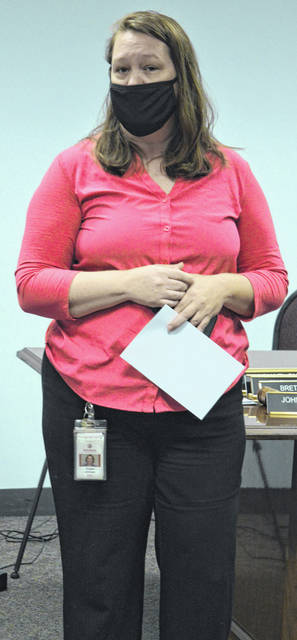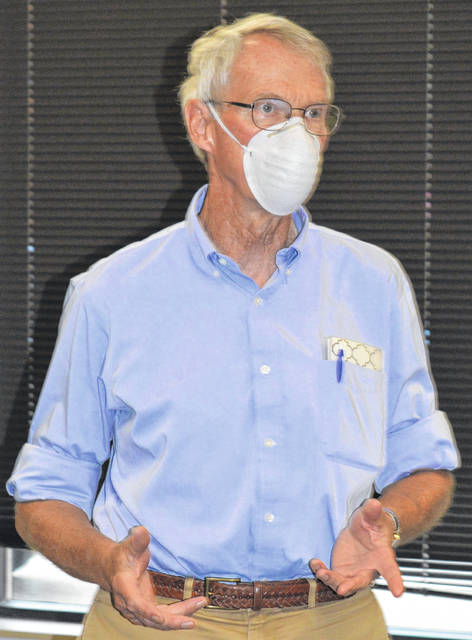


WILMINGTON — By month’s end, the goal is to have a more accurate gauge on the number of people experiencing homelessness in Clinton County.
A point-in-time (PIT) count, led by the Clinton County Homeless Shelter, is planned for Sept. 23. The PIT count will help to develop a coordinated community plan that aims to prevent and end homelessness in Clinton County.
As the News Journal reported in early February, Clinton County Regional Planning Commission (CCRPC) Executive Director Taylor Stuckert said a local group’s discussions on homelessness yielded a sense that the issue, the scale and the causes need to be better known so an effective response can be mapped out.
Proposals by interested professionals to assist in preparing a coordinated community plan must be submitted by early October, with a draft action plan submitted before February 2021, and the final draft of the coordinated plan completed by May 1, 2021.
The coordinated community plan process is meant to be a useful tool to get a better handle on the characteristics of a locale’s homelessness.
The announcement of a point-in-time count, and an update on the CCRPC’s effort to seek technical assistance for a coordinated community plan were among the highlights at a City Services Committee special meeting Tuesday night — the third in a series of sessions with a focus on local homelessness but also consideration of drug abuse and thefts that may sometimes be related.
On Tuesday, City Services Committee Chairman and Councilman Nick Eveland said the hope is that the coordinated community plan and accompanying report will present what’s actually happening with the homeless situation in Clinton County and in particular Wilmington.
Eveland gave a recap of the two prior meetings in which he drew a distinction “between homeless and vagrants.” Later in the session, Wilmington College Assistant Professor of Criminal Justice Katie Wright, who is a former Clinton County assistant prosecutor, said she thinks the terminology used in a dialogue about homelessness is important and that separating the idea of homelessness from vagrancy “gave me pause.”
Vagrancy has been a legal term in the past, she said, and vagrancy laws in the past ran into a lot of constitutional hurdles because they criminalized the status of homelessness.
To clarify how he was using the two words, Eveland said he thinks homeless is someone who through no fault of their own has fallen on hard times and their situation is not their personal choice. On the other hand, he said to him a vagrant is a person who chooses to live that lifestyle.
“ … [B]ut for whatever reason, they’ve [vagrants] chosen to live in our woods, behind the park, or wherever, rather than falling on hard times. To me that’s the distinction,” said Eveland, adding, “Again, I’m not an expert on this.”
Wright said she thinks one problem is that vagrancy laws historically have had a lot of constitutional hurdles “because they criminalize something that is a state-of-being.”
At Tuesday’s meeting, area drug rehabilitation and mental health providers gave presentations as part of the fact-finding efforts of the City Services Committee.
J. Craig Strafford, M.D., of New Vienna, said about half of the individuals experiencing homelessness either have severe mental illness or the disease of addiction.
“I think the opportunity is for everyone who’s engaged in this community with treating mental illness, homelessness or substance abuse to all come together and to see what we can do to work cooperatively and collaboratively in an environment freed of conflict. And that is what 45 years of practicing medicine has led me to conclude at this point in my career,” said Strafford.
Brad McMonigle, with the Talbert House Adult Outpatient offices in Wilmington, said there is a need to educate.
“One of the biggest challenges we have as a society is understanding the disease of substance abuse versus the criminality of it. I think too often we focus on the criminality and not the fact that it’s a disease,” said McMonigle.
For the next meeting of the City Services Committee, local police, judges and prosecutors will be asked about their perspectives on homelessness, vandalism and petty theft, plus the drug abuse level and how it impacts criminal activity.
Reach Gary Huffenberger at 937-556-5768.




